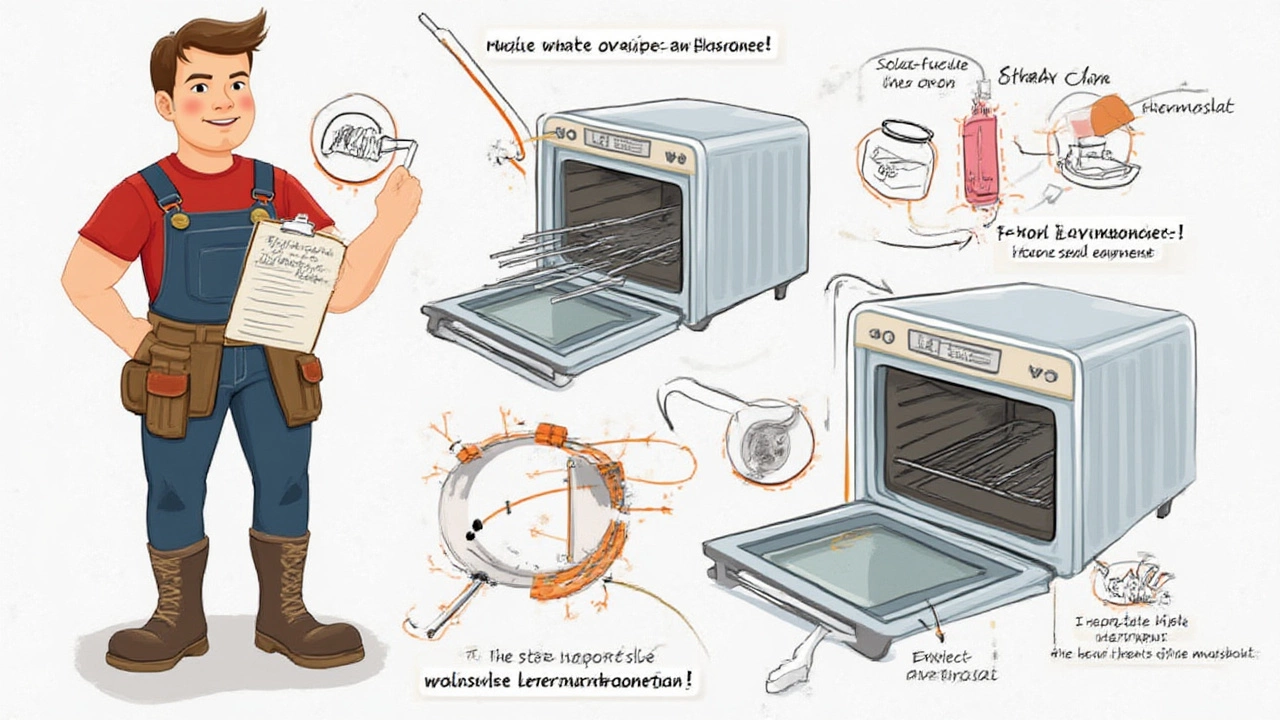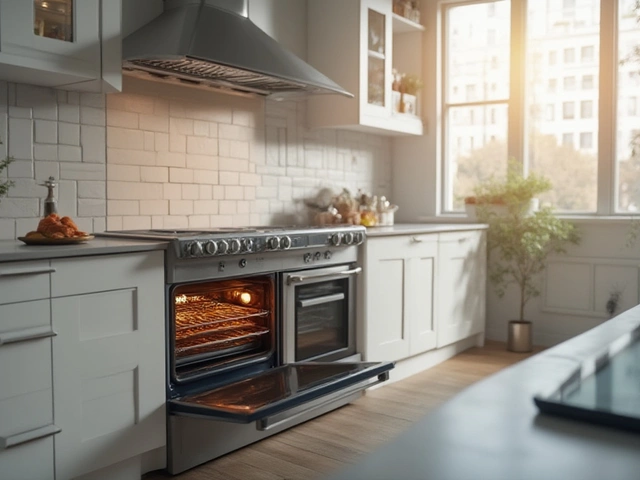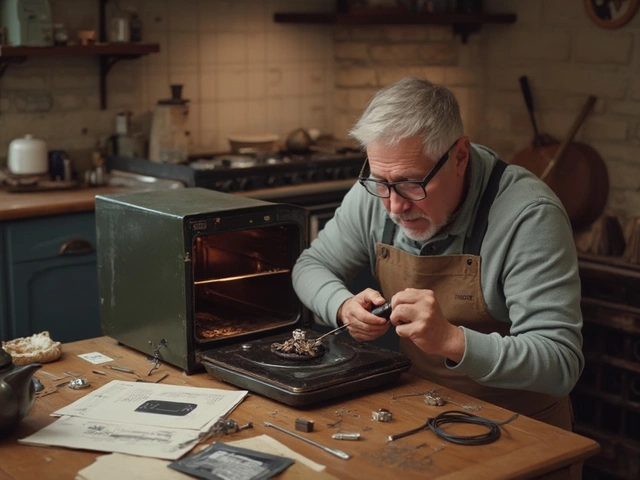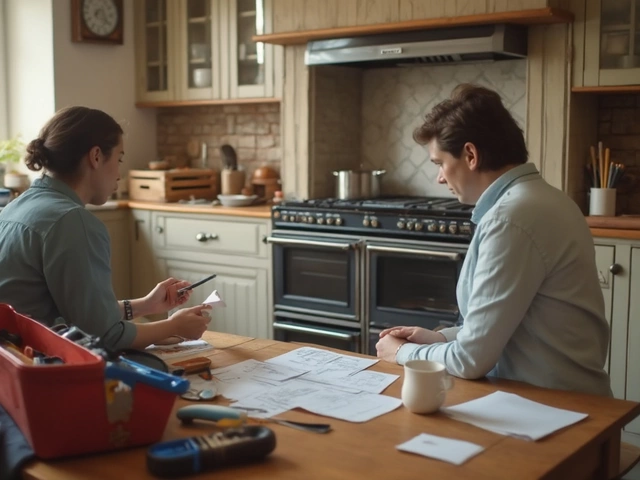Picture this: you’re all set to bake your famous lasagna for dinner. The aroma is supposed to fill the kitchen, your oven should roar to life, and everything should go according to plan. Suddenly, the top stays pale, the cheese doesn’t melt, and your oven is looking at you with indifference. What’s going on? At times like this, you might be asking yourself, "Is it the oven element or the thermostat that’s broken?" You’d be surprised how often people jump straight to panic mode, but the signs are usually there if you know what to look for.
Signs Your Oven Element Might Be Failing
Let’s start with the obvious: when ovens misbehave, the heating element—those metal coils lighting up in the back or bottom—often takes the blame. It’s actually the most common culprit when things run cold. The signs aren’t always flashy, though. Sometimes, your food cooks unevenly. Maybe your cookies have burnt bottoms but raw tops. You may even notice the element itself isn’t glowing as bright as it used to, or it’s not glowing at all. Yes, a burnt or broken spot on the coil is an instant giveaway. If you see blistering, cracks, or dark patches, that’s your cue. It’s not just about what you see, though. Ever noticed buzzing, sparking, or electrical smells? Those are serious red flags.
But here’s a lesser-known tip most people miss: turn the oven on and watch through the door. The element should glow evenly within a few minutes (and if it doesn't glow at all, yep, that’s a clue). Another thing—if your oven has trouble reaching higher temps, or it cuts out partway through baking, the element could be the villain. It’s actually pretty hard to make an element last longer than ten years, according to manufacturers. Here’s a cool fact: most modern elements have an outer sheath, so sometimes the inside is fried but the outside looks okay. Tricky, huh?
Don’t get too fixated on just visual checks, though. Professionals use a multimeter to test the element’s continuity. Dead elements won’t show continuity; a working element will. It sounds fancy, but it’s just a device that tells you if electricity can flow through the part. If you’re comfortable with a screwdriver and a little caution—always unplug the oven first—you can check it yourself.
Common Thermostat Issues and Their Clues
Here’s the twist: sometimes your oven’s heating elements are perfectly alive, but your food still comes out wrong. Enter the thermostat. This little device regulates temperature, making sure things don’t get out of hand. If your thermostat takes a vacation, your oven could become an unpredictable beast. Ever had the oven roast your chicken to dust or barely warm up a pizza? Bad thermostats can swing both ways. Another clue: inconsistent results. Maybe the oven says it’s at 350°F, but you can fry an egg on the lowest rack—something’s off. Classic symptoms include food burning too quickly, never getting fully cooked, or an oven that takes way longer to preheat.
The most you’ll see is your oven light acting strange. Some ovens have an indicator light that goes off when it hits temp—if that starts flickering, gets stuck on, or never lights, the thermostat is sending SOS signals. One surprisingly easy way to check the thermostat’s honesty is to use an oven thermometer you trust. Put it in the center rack, set your oven to a specific temp, and come back after preheating. Does the thermometer match what your oven says? If not, the thermostat could be lying to you. Lorelai, my wife, once baked brownies that looked fine on top but were soupy underneath. The thermostat, we discovered, was the culprit—and it took a cheap thermometer to crack the mystery.
Sometimes calibration will help. Ovens drift out of sync over the years (just like clocks). Check your manual for how to recalibrate yours, and don’t forget: severe temperature swings usually mean the thermostat—not the element—is to blame.

How to Test: DIY Diagnosis Before Calling a Pro
If you hate the idea of spending money on a repair pro before knowing what’s wrong, you’re not alone. The good news is you can do some easy detective work yourself. Here’s a checklist to guide you:
- Start simple—check if the oven is plugged in and if your circuit breaker is on. You’d be shocked how often this fixes the problem.
- Look for visible damage on the element. If you see burns, melting, or breaks, it’s almost always the element’s fault.
- Run the oven and watch the element. If there’s no glow after a few minutes at a high temp, that’s a bad sign.
- Test with an oven thermometer. Compare the oven’s display with the real temperature after at least 15 minutes of preheating. Big differences point to a possible bad thermostat.
- Listen for weird noises—buzzing, popping, or sizzling. These are never normal and suggest electrical problems with the element.
- If you have a digital oven, error codes can be goldmines. Look them up in your manual or the manufacturer’s website. Codes often point straight to the problem: "F2" or "F3" sometimes mean faulty thermostat or sensor.
If you’re handy and have a multimeter, unplug your oven and detach the element. Touch the probes to the terminals. A reading means the element is good; no reading means it’s dead. Same goes for the thermostat, if you can access it, though it’s trickier on modern ovens.
Here’s something lots of manuals won’t tell you: a lot of thermostats get stuck or corroded after a few years. If tapping it lightly changes its behavior, it’s time to swap it out. My neighbor once thought his oven was haunted. It just needed a new thermostat—he’d have spent hundreds if he hadn’t checked first.
When Replacement Is the Only Solution
If your tests point to the element or the thermostat, sometimes there’s no point trying to fix it—they’re designed to be replaced, not repaired. According to the Appliance Manufacturers Association, a heating element’s average lifespan is about five to ten years, depending on usage. Thermostats can last longer but are sometimes a bear to find for older ovens.
Here’s where it gets frustrating: not all elements or thermostats are easy to replace. Find your oven’s make and model—there’s usually a sticker somewhere on the door or frame—and look it up online. Parts websites often have exploded diagrams. Sometimes, swapping an element is dead simple: two screws, two wires, and you’re done. The thermostat can be tougher, buried in the back, with wires that take some untangling.
Don’t cheap out on replacement parts. Off-brand elements or thermostats might save you a few bucks but can fail faster—or worse, cause dangerous shorts. Using the correct part ensures proper heating and reduces fire risks. An overheated oven is no joke.
If you aren’t comfortable doing the swap, don’t risk it. Messing with electrical appliances carries a real shock risk. As the National Fire Protection Association warned, kitchen appliances are a leading cause of house fires. Better to call a professional if anything feels shaky. As a respected repairman once told me, "Sometimes the $100 for a quick fix is the cheapest insurance you’ll ever buy."
“A malfunctioning oven isn’t always obvious. Even minor issues with the element or thermostat can throw off your whole cooking game. Never ignore strange behavior, because those little signs can mean big trouble down the line.” – Appliance Service News, April 2024

Pro Tips: Keep Your Oven Happy and Safe
Now you know how to spot problems, here are ways to keep the issues from coming back. First, keep that oven clean. Built-up grease can trap heat and put strain on both the element and the thermostat. Run a regular cleaning cycle, or just wipe down spills before they harden.
Use your oven regularly. It sounds odd, but long periods of inactivity can lead to seized or corroded components. If you don’t use the oven much, crank it up every couple of weeks for a short burst. That keeps everything flexible. Don’t overload your oven, either. Stuffed racks cut off air circulation, which can cause hot spots and stress out your elements. If you bake large meals, rotate dishes to avoid uneven heating.
Store the manual—either paper or digital. Modern ovens have so many sensors and smart features that knowing which code means what can save you a pile of guesswork. Check if your oven has a “self-diagnose” mode; many new models flash error lights or codes to narrow down a problem.
For total peace of mind, some folks swear by routine professional checks every couple years. Technicians can spot corrosion and wear before they get serious. If you’re buying a used oven, always have it checked before hooking it up at home.
So next time your brownies flop or your roast chicken comes out suspiciously raw, remember: it’s almost always the element or the thermostat. With a sharp eye, a cheap thermometer, and a willingness to peek behind the panel, you can diagnose most problems yourself. And if all else fails, you now have the vocabulary to tell a repair tech what’s going on, which might just save your evening—and your dinner plans—with the family.




